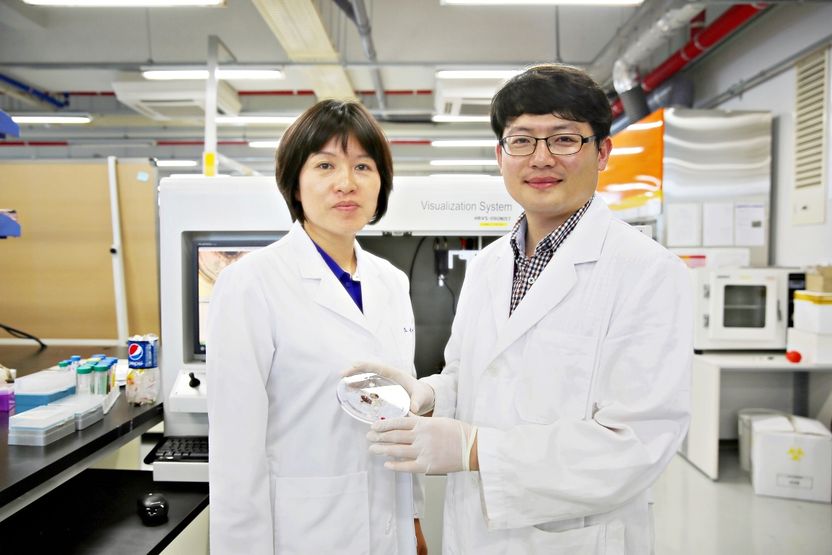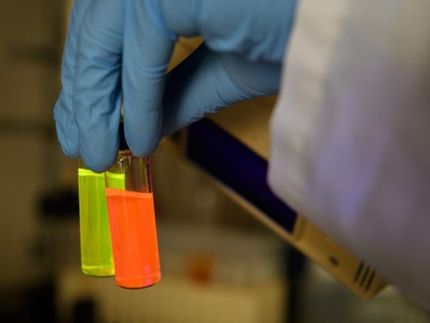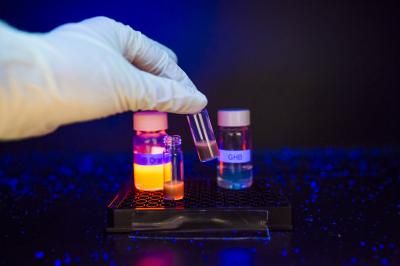Do you want to know how much caffeine is in your drink?
A team of researchers led by Prof. Young-Tae Chang from National University of Singapore and Prof. Yoon-Kyoung Cho from Ulsan National Institute of Science and Technology (UNIST), Korea, developed a fluorescent caffeine detector and a detection kit that lights up like a traffic light when caffeine is present in various drinks and solutions.

Fully automated microdfluidics device using lab-on-a-disc technology to extract and measure caffeine
UNIST
The research work was published in Scientific Reports.
Caffeine drinks are ubiquitous and it would be unimaginable for many of us to go a day without caffeine. But certainly one begins to worry about how much caffeine one consumes every day.
Here is a convenient way to see how much caffeine is in your drink. The novel caffeine sensor, named Caffeine Orange can be used for handy visualization of the amount of caffeine in your coffee or energy drinks.
With the non-toxic caffeine detection kit using Caffeine Orange, naked-eye sensing for various caffeine concentrations is possible based on color changes upon irradiation with the detection kit, and emitting a light to your drink with a green laser pointer.
Solutions with high caffeine concentrations turn red while solutions with moderate and low caffeine concentrations turn yellow and green, respectively when the drink is irradiated with a laser pointer.
The novel fluorescent caffeine detector, called Caffeine Orange was developed by the team led by Prof. Chang from National University of Singapore. To fully utilize traffic–light caffeine sensor, they need to extract caffeine from solutions. An automated system by incorporating microfluidics technique developed by the UNIST research team, lab-on-a disc, was applied to extract and to measure caffeine.
“Applying lab-on-a-disc technology to real life application with the novel caffeine sensor is very meaningful,” said Prof. Cho. “We will continue to develop new sensors applicable to various materials utilizing lab-on-a-chip technology.”
Beverages containing caffeine, such as coffee, tea, soft drinks, and energy drinks, enjoy great popularity around the world while various studies have raised both positive and negative health related concerns.
But it is clear that caffeine overdose can lead to caffeine intoxication, with symptoms such as anxiety, irregular heartbeat, and insomnia. In extreme cases, a large overdose can lead to hallucinations, depression, or even death.
“You can use this caffeine detection kit as a ‘traffic-light caffeine amount designator’,” said Prof. Chang. “The reddish orange color indicates a stop sign for people who cannot uptake caffeine, while yellow and green indicate a warning signal and safe zone respectively.”
In addition, due to its abundant existence in domestic wastage, caffeine was found to be an important indicator of natural water system pollution by domestic drain.
The novel detector, Caffeine Orange, exhibits a 250-fold fluorescence enhancement upon caffeine activation and high selectivity responding to caffeine analogs that have similar chemical structures.
The caffeine sensor and detection kit not only to enhance product safety during extensive consumption of caffeine, but also serve as a practical path of uniting science with real life.
Most read news
Topics
Organizations
Other news from the department science

Get the analytics and lab tech industry in your inbox
By submitting this form you agree that LUMITOS AG will send you the newsletter(s) selected above by email. Your data will not be passed on to third parties. Your data will be stored and processed in accordance with our data protection regulations. LUMITOS may contact you by email for the purpose of advertising or market and opinion surveys. You can revoke your consent at any time without giving reasons to LUMITOS AG, Ernst-Augustin-Str. 2, 12489 Berlin, Germany or by e-mail at revoke@lumitos.com with effect for the future. In addition, each email contains a link to unsubscribe from the corresponding newsletter.






















































